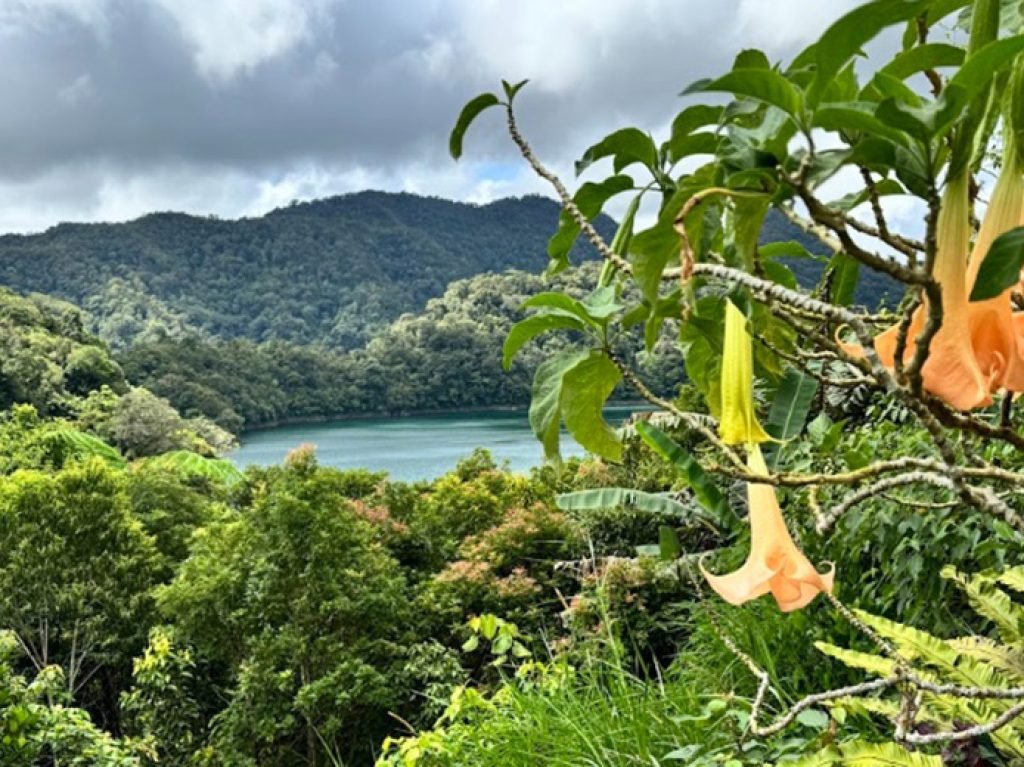
Five new Asean Heritage Parks (AHPs) have been added to the network of top nature reserves and natural parks in the Southeast Asian region, the Asean Centre for Biodiversity (ACB) recently announced.
Three of the new AHPs are from the Philippines, making 14 the total number of AHPs in the country from the previous 11.
The new Philippine AHPs are Balinsasayao Twin Lakes Natural Park (BTLNP), Turtle Islands Wildlife Sanctuary (TIWS) and Apo Reef Natural Park (ARNP).
The two others are Phou Xieng Thong National Protected Area and Nam Poui National Protected Area both in Lao PDR.
The five additional AHPs have expanded the heritage parks’ number to 62.
The announcement was made in November as the AHP Programme marked its 40th year of implementation.
Parks of outstanding values
OIC Assistant Director Armida P. Andres of the Department of Environment and Natural Resources-Biodiversity Management Bureau (DENR-BMB) explained that AHPs are selected protected areas, which are known for their unique biodiversity and ecosystems, wilderness and outstanding values.
“AHPs were given the highest recognition because of their importance as conservation areas. With the recent declaration of three new AHPs in the Philippines, collaboration among the national government, CSOs [civil society organizations], LGUs [local government units], communities, and other stakeholders is expected to be further strengthened,” Andres told the BusinessMirror via Messenger.
Guided by the Expanded National Integrated Protected Areas System Act of 2018, the DENR-BMB remains steadfast in ensuring the management effectiveness of the country’s 14 AHPs, alongside the other protected areas nationwide.

LGUs’ vital role
Andres said concerned LGUs play a vital role in maintaining the integrity of AHPs by aligning their plans with the conservation plans of the AHPs and complementing programs and initiatives of the national government and CSOs in biodiversity conservation.
On the other hand, the declaration of Turtle Islands Wildlife Sanctuary as an AHP will be instrumental in strengthening the partnership of the DENR and the Ministry of Environment, Natural Resources and Energy (MENRE) of the Bangsamoro Autonomous Region in Muslim Mindanao (BARMM).
“The [ACB] will also play an important role in providing capacity-building initiatives for AHP managers to support science-based decision-making while also promoting the country’s rich biodiversity,” Andres said.
Hallmark initiative
ACB Acting Executive Director Clarissa C. Arida said the AHP, launched on November 29, 1984, is a hallmark initiative of Asean for biodiversity conservation. It features a network of protected areas that best represent the common natural heritage in the region.
“For four decades, the AHP Programme has remained relevant and continues to grow—as an outstanding showcase of ‘One Asean’ regional cooperation and the commitment of the Asean member states to preserve and restore its immense natural wealth,” Arida said.
“We provide capacity-building training on how to manage protected areas to park managers, LGUs, and other stakeholders,” she added.
Arida added that as part of the AHP Programme, the new AHPs in the Philippines will be promoted by ACB, thereby boosting their tourism potential would be essential—bringing in much-needed revenues not only to the LGUs, but more importantly, to the community that helps protect the AHPs.
Balinsasayao Twin Lakes Natural Park
The Balinsasayao Twin Lakes Natural Park (BTLNP) is designated as the 59th AHP.
Rising to 1,763 meters above sea level, the twin crater lakes of Balinsasayao and Danao are nestled in mountainous tropical lowland evergreen forests and upper montane rain forests in the province of Negros Oriental, in the central Philippines.
Covering an area of 8,016.05 hectares, the park is home to a total of 325 fern species, 237 tree species, 27 mammalian fauna, and 209 resident and migrant birds, of which 14 species are globally threatened.
As an Important Bird Area (IBA), there are a total of 209 resident and migrant birds recorded, 14 species of them are globally threatened most notably, the critically endangered Negros bleeding-heart pigeon (Gallicolumba keayi) and the Visayan wrinkled-billed hornbill (Aceros waldeni).
The Balinsasayao park management allows recreational activities in the park as long as visitors do not disturb or affect the integrity of the area, including its wildlife and environs.
Turtle Islands Wildlife Sanctuary
The Turtle Islands Wildlife Sanctuary (TIWS), as the name suggests, is a haven for marine turtles.
Situated in the southwestern tip of the Philippines, it is a pride of Mindanao and the 60th AHPs.
The TIWS is part of the Sulu archipelago in the municipality of Tawi-Tawi, and is characterized as a rocky islet that spans six islands. It is under the jurisdiction of the MENRE of BARMM.
TIWS is known to be the only major nesting habitat of green sea turtles (Chelonia mydas) in the Philippines and the only one in the Asean region, as well.
Based on DENR records, there are 414,529 nests of green sea turtles and hawksbill turtles in TIWS in the past 29 years with an average of 13,817 per year.
It also hosts many unique flora, counting to 281 flora species.
Apo Reef Natural Park
A marine nature reserve that stretches 27,488 hectares in the Mindoro, Marinduques, Romblon and Palawan (Mimaropa) region, the Apo Reef Natural Park (ARNP) is situated about 28 km west of the municipality of Sablayan on Mindoro Island.
The largest contiguous coral reef system in the Philippines and the second largest in the world, the ARNP is a marine biodiversity hotspot spanning vibrant coral reefs, pristine lagoons, seagrass beds, various mangroves, and lush beach forests.
It is a sanctuary for over 482 fish species, 63 genera of hard corals, and rare marine invertebrates, such as the endangered green sea turtle and critically endangered hawksbill turtle.
The ARNP is home to iconic species like dugongs, whale sharks, and hammerhead sharks, making the park one of the country’s tourist magnets.
Designated as the 61st AHP, the park is an IBA and holds the distinguished Blue Park Award for its outstanding conservation of marine wildlife.
It is now on the Tentative List from the Philippines for inclusion on the Unesco World Heritage List.
Not counting local protected areas, the Philippines has over 240 of national parks and protected areas.
However, despite efforts to protect the so-called areas set aside for conservation, illegal activities that undermine their status remain a big challenge with the DENR, having no law enforcement unit that can fully enforce the various environmental laws that are meant to save the country’s endangered wildlife from extinction.
Image credits: PHOTOS COURTESY OF ACB





